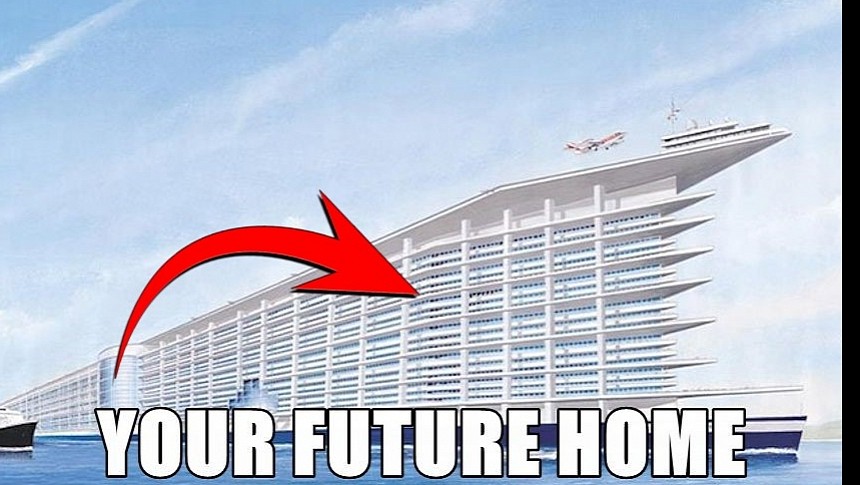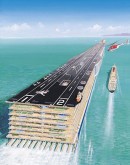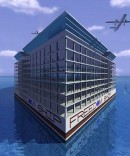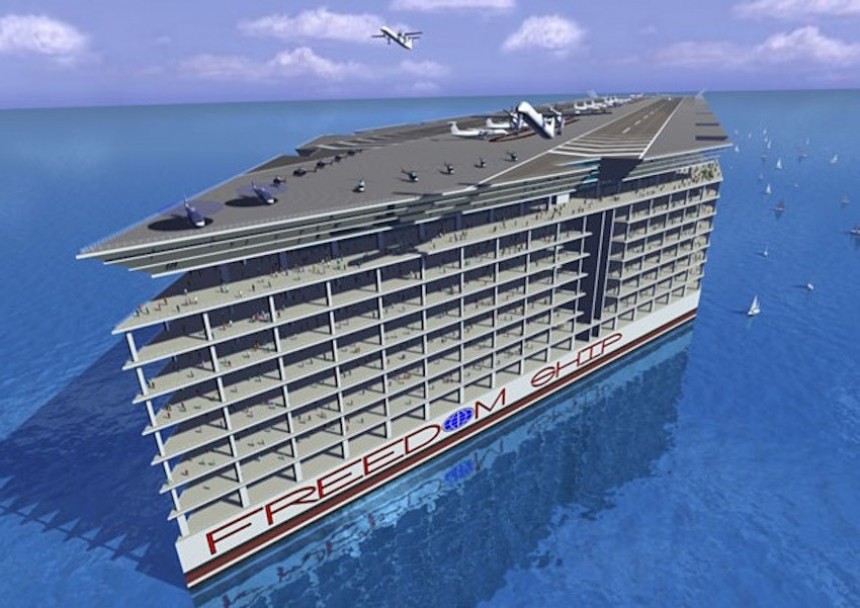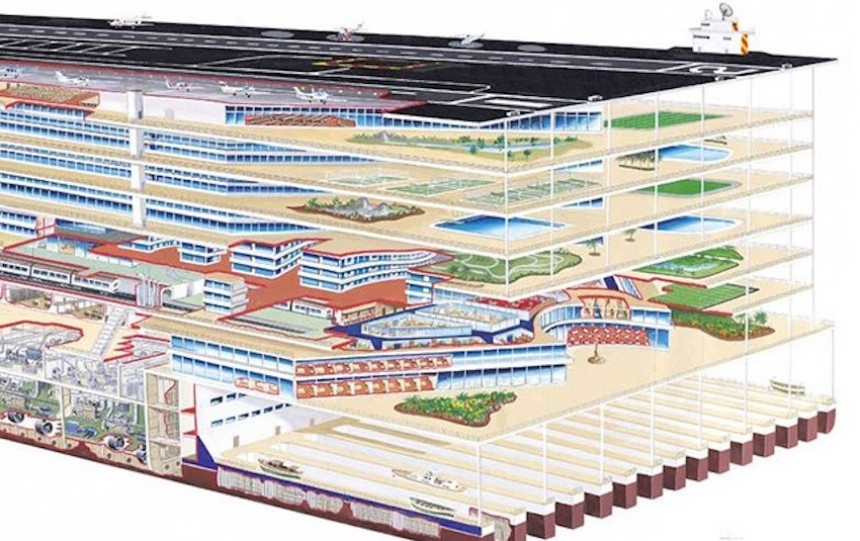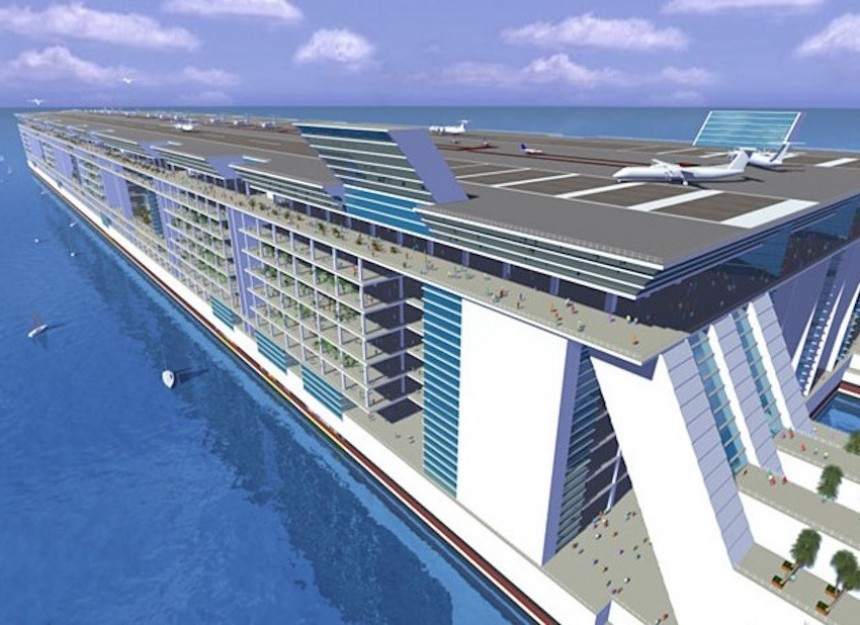Humans love to explore, and it's perhaps this desire to go to the farthest reaches of the planet that has partly fueled the current high demand for extended cruises. But, as it turns out, the desire to turn an extended cruise into a lifestyle isn't new.
Earlier this year, two huge cruise-like projects ended up in the headlines for all the wrong reasons. MV Narrative, a luxury residence at sea that should have taken off in 2019 is facing a very uncertain future because no one would build – or pay for – such a ship. Life at Sea, which proposed a 3-year-long cruise, has also been canceled for the lack of a ship.
No matter how boldly some dreamers might dream, reality is always there to kick them in the face. In the case of extended cruises or floating residences, that kick is that it's impossible to build a ship of this size, which would remain functional for years or even decades and provide all that it promises to deliver.
The even bigger kick is that, even though there are many people willing to pay money for such an experience, there aren't enough investors to back up the expensive project.
In a long line of dreamers, Freedom Ship was – and is – the biggest, without a single doubt. Freedom Ship International, or FSI, was meant to be the world's biggest vessel, not a cruise ship but a floating, self-sufficient city. Think of it as an oversize barge with a superstructure that contained everything you'd find in a city, and you'd be right on the money.
The Freedom Ship dream is also among the most enduring. It was never more than a concept, but it did go through a couple of revivals and raised some money from potential customers and investors, and it's still around today. To the casual observer, it's either a cautionary tale or a detailed example of a possible, decidedly bright future.
The idea for Freedom Ship started in the late 1990s and was probably inspired by the giant raft from Jules Verne's 1895 novel Propeller Island. Engineer Norman Nixon developed it into the project we know today as Freedom Ship and started talking about it to the media in 2002.
Interest in it was instant, and how could it not be? "Envision an ideal place to live or run a business, a friendly, safe and secure community with large areas of open space and extensive entertainment and recreational facilities," reads a description. "Finally, picture this community continually moving around the world."
This was the future of dreams: not a city but a floating community, a mobile ocean colony with luxury features, home for 100,000 people with all the necessary infrastructures and no tax. Essentially a flat-bottomed barge with a high-rise development as a superstructure, Freedom Ship would be built on a basis made up of 520 airtight steel cells, interconnected as larger platforms. The barge would be joined at sea, with construction on top also done directly out on the water.
Once complete, the Freedom Ship would be 4,500 feet long, 750 feet wide, and 350 feet high (1,372 meters by 229 meters by 107 meters). The 35-story superstructure would offer an interior volume of 2.7 GT, more than enough to house everything from casinos to schoolrooms, hospitals, offices, and parks.
Much like a larger city, it would cater to every need, regardless of whether it carried younger passengers or retirees. There'd be at least a couple of airports, proper healthcare, a well-thought-out transportation system including a subway line and bicycle paths, restaurants and bars, shopping centers, parks and gardens, and even tourist attractions and sleeping quarters for the tourists.
Propulsion would be by diesel engines and Azimuth thrusters, with Nixon assuming at least 100 engines of 3,700 hp each would be necessary to keep the barge in motion. And it would have to be in motion: the plan was to have it endlessly circumnavigate the globe with stops at pre-established ports but never retiring to any one in particular.
Freedom Ship would have to be self-sufficient, too, so Nixon included sustainable features as well. All toilets onboard would be incinerating toilets so they'd generate no waste, while plastic used would be recycled on the spot. There'd be gardens and markets for fresh produce and probably mini-farms as well. In one of his earlier interviews, Nixon boasted that an FSI resident would produce 80% less waste than they would on solid land. How's THAT for a dream?
Roger Gooch, who was part of the original team of FSI founders, revived the project in 2013, one year after Nixon's passing. By then, the estimated cost of the build had also ballooned from the original $6 billion to $11 billion, which made investors even more wary.
Environmental concerns and the realization that climate change would seal the fate of a vessel of this size in a matter of decades did the rest: FSI slipped off the radar soon after.
Strangely enough, the concept seems to be in development, still. The official website, briefly taken offline after the first "death," is still available, still displaying the old renders and the call for investors to reach out and get involved, even though the "News" section is empty and it doesn't look like any updates have been added for years.
In a statement to autoevolution, Mr. Gooch says that "the first City at Sea project has obtained the investors necessary to move forward" after a merger with Freedom Cruise Line - Singapore. The primary construction process "will take place in Indonesia next year."
So, there you go again. Third time is a charm. FSI continues to dream the dream of humanity relocating at sea, laughing in the face of the reality saying that a months-long cruise remains the only way to do it. And even that one sucks if something like the 2020 international health crisis happens again.
No matter how boldly some dreamers might dream, reality is always there to kick them in the face. In the case of extended cruises or floating residences, that kick is that it's impossible to build a ship of this size, which would remain functional for years or even decades and provide all that it promises to deliver.
The even bigger kick is that, even though there are many people willing to pay money for such an experience, there aren't enough investors to back up the expensive project.
The Freedom Ship dream is also among the most enduring. It was never more than a concept, but it did go through a couple of revivals and raised some money from potential customers and investors, and it's still around today. To the casual observer, it's either a cautionary tale or a detailed example of a possible, decidedly bright future.
The self-sufficient city of Freedom
Over the years, we've seen countless variations on the idea of a floating city. Even today, when we're theoretically wiser and (should) know better than to hope such a thing could be built, we still have many in-development projects of this kind. Marine real estate is the real estate of the future, apparently, and humanity is better off living at sea than on land.Interest in it was instant, and how could it not be? "Envision an ideal place to live or run a business, a friendly, safe and secure community with large areas of open space and extensive entertainment and recreational facilities," reads a description. "Finally, picture this community continually moving around the world."
This was the future of dreams: not a city but a floating community, a mobile ocean colony with luxury features, home for 100,000 people with all the necessary infrastructures and no tax. Essentially a flat-bottomed barge with a high-rise development as a superstructure, Freedom Ship would be built on a basis made up of 520 airtight steel cells, interconnected as larger platforms. The barge would be joined at sea, with construction on top also done directly out on the water.
Once complete, the Freedom Ship would be 4,500 feet long, 750 feet wide, and 350 feet high (1,372 meters by 229 meters by 107 meters). The 35-story superstructure would offer an interior volume of 2.7 GT, more than enough to house everything from casinos to schoolrooms, hospitals, offices, and parks.
Much like a larger city, it would cater to every need, regardless of whether it carried younger passengers or retirees. There'd be at least a couple of airports, proper healthcare, a well-thought-out transportation system including a subway line and bicycle paths, restaurants and bars, shopping centers, parks and gardens, and even tourist attractions and sleeping quarters for the tourists.
Freedom Ship would have to be self-sufficient, too, so Nixon included sustainable features as well. All toilets onboard would be incinerating toilets so they'd generate no waste, while plastic used would be recycled on the spot. There'd be gardens and markets for fresh produce and probably mini-farms as well. In one of his earlier interviews, Nixon boasted that an FSI resident would produce 80% less waste than they would on solid land. How's THAT for a dream?
Two dead starts and a painfully slow gestation
The Freedom Ship rode several news cycles before the financial crisis of 2007-2008, which drove the (first) nail through its coffin. There was clear interest in the project despite early critics pointing out the unlikelihood of such a project, both because of its size and its intended purpose.Environmental concerns and the realization that climate change would seal the fate of a vessel of this size in a matter of decades did the rest: FSI slipped off the radar soon after.
Strangely enough, the concept seems to be in development, still. The official website, briefly taken offline after the first "death," is still available, still displaying the old renders and the call for investors to reach out and get involved, even though the "News" section is empty and it doesn't look like any updates have been added for years.
So, there you go again. Third time is a charm. FSI continues to dream the dream of humanity relocating at sea, laughing in the face of the reality saying that a months-long cruise remains the only way to do it. And even that one sucks if something like the 2020 international health crisis happens again.
